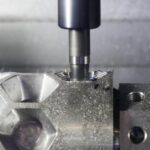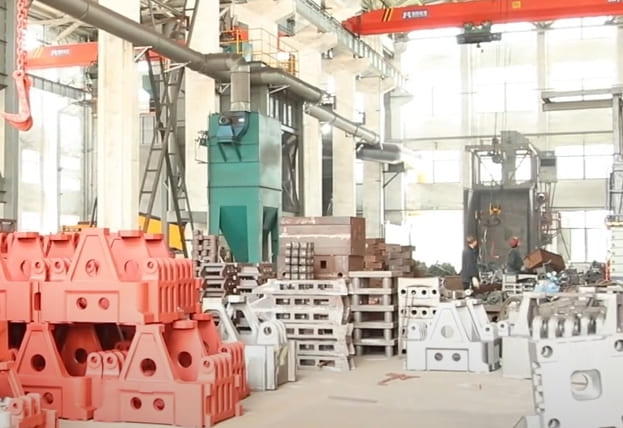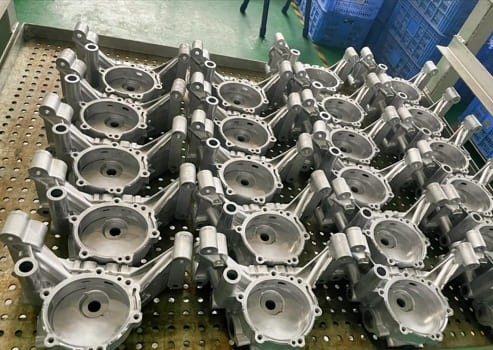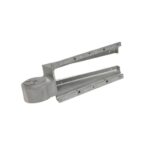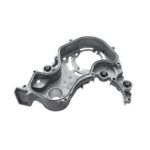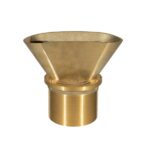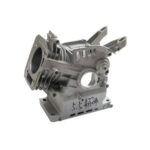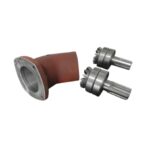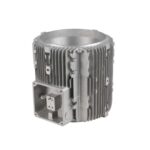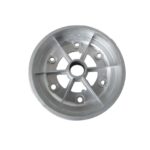What Are Tapped Holes and Threaded Holes
A threaded hole is any hole that contains an internal thread, no matter how the thread was made.
A tapped hole is a threaded hole created specifically by tapping with a tap—either a cutting tap that generates chips or a form tap that displaces metal with no chips.
In short, every tapped hole is a threaded hole, but not every threaded hole is tapped; some are produced by thread milling on a CNC.
Tapping vs Threading
What they mean
- Threading is the overall act of creating threads, internal or external, by tapping, thread milling, thread forming, turning, or dies.
- Tapping is the most common way to produce internal threads quickly after drilling a tap-drill.
- Thread milling uses a CNC tool that interpolates a helical path to cut the internal thread with precise diameter control.
- Thread forming (form tapping) displaces metal to build the thread—no chips—and works best in ductile materials.
Why it matters
Your choice affects cycle time and piece price, diameter and position accuracy, first-pass yield, rework flexibility, risk in blind holes, and tool life. On high-value parts, the “safer” method can save the job even if it’s slower per hole.
When to use tapping
Use tapping when you want the fastest and lowest-cost method for common sizes in machinable, reasonably ductile materials. Prepare the correct tap-drill, add a small chamfer, use proper lubricant, and control speed/torque. For blind holes, choose spiral-flute cutting taps to pull chips up, or use form taps to eliminate chips entirely.
When to use thread milling
Pick thread milling when you need tight pitch-diameter control, excellent positional accuracy, large diameters, difficult or gummy alloys, or extra safety in blind holes. You can adjust diameter via cutter compensation and retract any time—great for expensive parts and late-stage operations.
When to use thread forming
Choose form taps in ductile materials (aluminum, mild steel, brass) when you want no chips, dense and strong flanks, and blind-hole safety. Remember form taps require a slightly larger tap-drill than cutting taps and need adequate wall thickness.
Tap-Drill Sizes for Threaded Holes
Tap-drill size controls torque and thread engagement. Too small → broken taps; too large → weak threads.
Metric rule
Tap-drill = Major diameter − Pitch
Example: M6×1.0 → 6.0 − 1.0 = 5.0 mm.
Unified inch rule (UNC/UNF)
Tap-drill = Major diameter − 1/TPI
Example: ¼-20 UNC → 0.250 − 1/20 = 0.200 in → closest standard drill #7 (0.201 in).
These rules target roughly 70–75% thread, which is strong for most production parts without excessive torque. If your print or standard calls for something else, follow that requirement.
Mini tap-drill cheat-sheet
| Thread | Pitch or TPI | Tap-drill |
|---|---|---|
| M5 × 0.8 | 0.8 mm | 4.2 mm |
| M6 × 1.0 | 1.0 mm | 5.0 mm |
| M8 × 1.25 | 1.25 mm | 6.8 mm |
| 10-24 UNC | 24 | #25 (0.1495″) |
| 10-32 UNF | 32 | #21 (0.1590″) |
| ¼-20 UNC | 20 | #7 (0.201″) |
Tapped Holes and Threaded Holes in Blind Holes and Through Holes
This section makes three focused comparisons so the intent is crystal clear.
Blind holes — tapping vs thread milling vs form tapping
- Cutting tap with spiral flutes
Pros: fast and common; chips are pulled upward.
Watch: chip packing, undersized tap-drill, inadequate bottom clearance. - Form tap
Pros: no chips, dense flanks, excellent for ductile aluminum and mild steels; safer at the bottom of blind holes.
Watch: needs a slightly larger tap-drill; avoid brittle or very high-silicon castings; confirm wall thickness to prevent bulging. - Thread milling
Pros: safest near the bottom, exact diameter control, good for hard or gummy alloys.
Watch: slower per hole and needs rigid CNC interpolation.
Blind-hole design notes
Leave bottom clearance of about 1–1.5× pitch beyond full thread depth. Add a 45–60° lead-in chamfer before threading. On the drawing, specify total depth and full thread depth separately. For castings, confirm minimum wall and porosity controls; state whether thread inserts are allowed or required.
Through holes — tapping vs thread milling
- Gun tap (cutting)
Pros: fastest cycle; chips exit forward out of the part; perfect for production.
Watch: mouth burrs—add chamfer and deburr to protect sealing faces. - Thread milling
Pros: excellent pitch-diameter control and clean edges; one tool can cover multiple sizes within a range.
Watch: slower per hole; ensure your circular interpolation tolerance is tight enough.
Blind vs through — quick selector
| Hole type | Best default | Safer alternative | Notes |
|---|---|---|---|
| Blind, ductile material | Form tap | Thread mill | No chips; low breakage risk; check wall thickness |
| Blind, hard or gummy | Thread mill | Spiral-flute cutting tap | Avoids seizure; keep bottom clearance |
| Through, high volume | Gun tap | Thread mill | Fastest cycle; deburr the mouth |
| Through, tight tolerances | Thread mill | Gun tap | Program PD precisely; cleaner edges |
Threaded Holes on Drawings — How to Call Them Out
Make the intent explicit so nobody guesses:
- Specify thread size and pitch plus class of fit (e.g., M6×1 – 6H, ¼-20 UNC-2B).
- State blind or through, total depth, and full thread depth.
- If torque, pull-out, or sealing matters, put the target torque, proof load, or gauge criteria on the print. Avoid vague “100% thread.”
- For castings, note any allowable thread repair (helicoil or key-locking insert) and surface treatments around the hole.
Tapping vs Threading — Common Problems and Field Fixes
- Tap breakage
Causes: undersized tap-drill, sticky material, misalignment, poor lubrication.
Fix: correct the drill; use spiral-flute or form tap; reduce speed; increase lubricant; check alignment. - Loose threads
Causes: oversized tap-drill or fit class too loose.
Fix: verify drill size; move to 2B/6H class unless the print requires otherwise. - Mouth burrs
Causes: missing chamfer and deburr.
Fix: add a 45–60° chamfer; protect sealing faces. - Cross-threading or poor engagement
Causes: bad starting alignment.
Fix: spot-face or add a small radius lead-in; use rigid fixturing or tap guides. - Thread pull-out in castings
Causes: thin wall or porosity.
Fix: use form taps if ductility allows; increase wall; design-in thread inserts for high-load joints.
Threaded Holes in Different Materials — Practical Notes
- Aluminum alloys (6061, 6063, A356, A380)
Excellent with form taps; watch thin walls and porosity in die castings; inserts are common for high-load points. - Stainless steels (304, 316)
Work-hardening and galling risk—use high-quality spiral-flute taps or thread milling, lower SFM, and flood coolant. - Grey cast iron
Free-cutting with crumbly chips; cutting taps work well but edges chip easily—deburr generously.
Tapping vs Threading — A Quick Selector for Real Projects
- Need speed and cost → choose tapping.
- Need tight diameter and position tolerance → choose thread milling.
- Blind holes in ductile materials → choose form taps.
- External threads → choose dies or single-point turning.
- Thin walls or soft materials with high loads → choose thread inserts.
RFQ Checklist for Tapped Holes and Threaded Holes
- Thread callout and fit: M6×1 – 6H, ¼-20 UNC-2B
- Quantity, material grade, and heat-treat condition
- Blind or through, total depth, and full thread depth
- Preferred process: tapping, thread milling, or form tapping
- Performance targets: torque, pull-out, percentage thread, or gauge requirement
- Structural limits: wall thickness, use of thread inserts allowed or required
- Finish and cleanliness around the hole: anodize, coating, sealant, cleaning chemistry
- Inspection plan: gauges, torque method, sampling, PPAP or special notes





